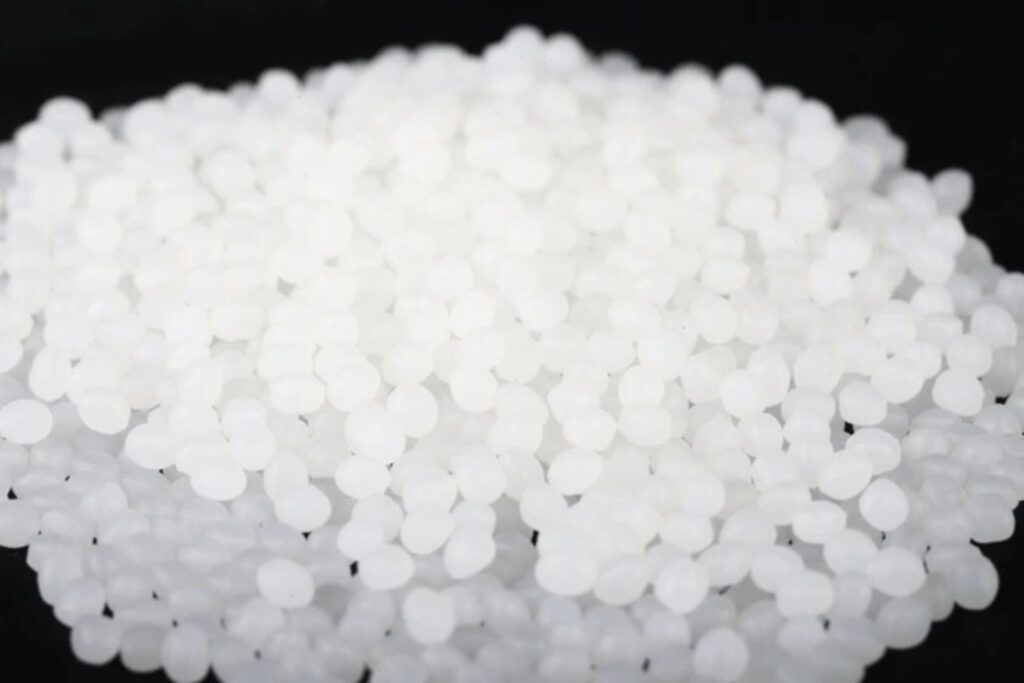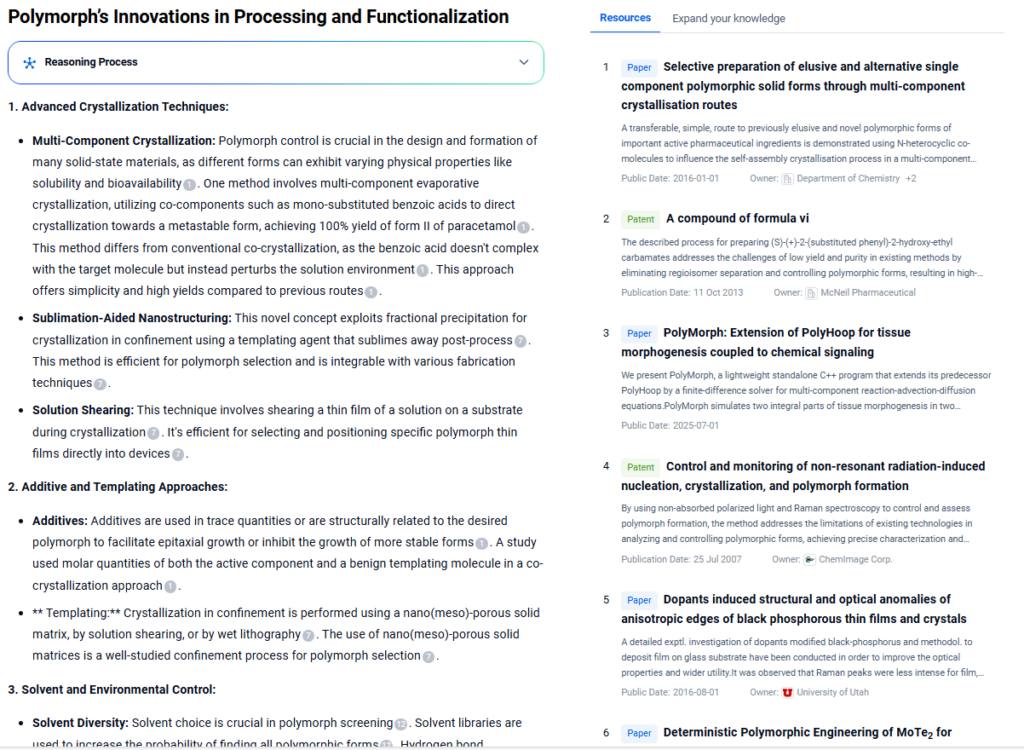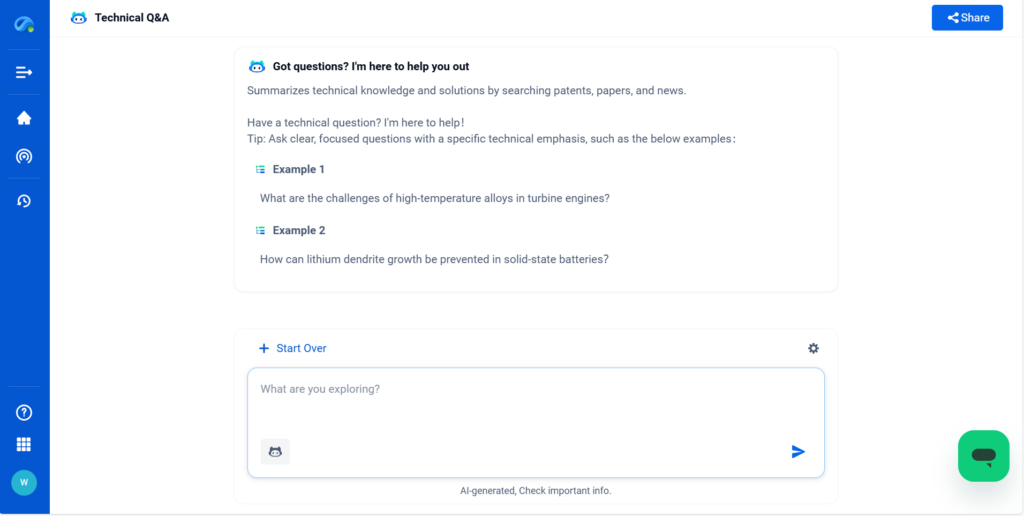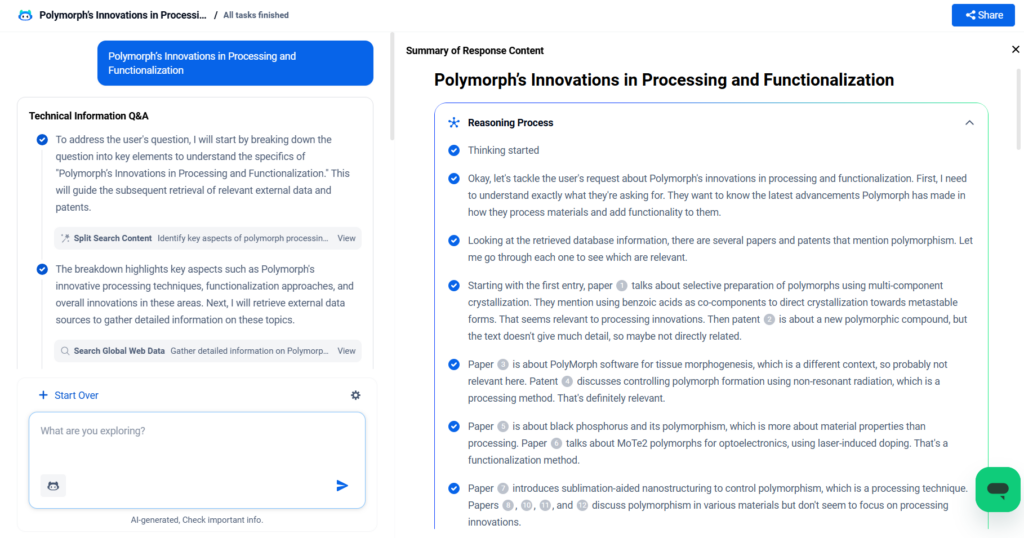
Polymorph, commonly referring to polycaprolactone thermoplastic (PCL), is a unique, low-melting-point, biodegradable polymer widely used in prototyping, biomedical engineering, and tooling. Its standout feature is its shape-shifting ability—when heated above ~60°C, polymorph becomes moldable and solidifies upon cooling, retaining a high degree of dimensional stability. Engineers across disciplines leverage its tunable mechanical properties and safe handling profile for rapid design iteration and functional part manufacturing.
In aerospace, medical, and educational contexts, polymorph enables quick customization without complex equipment. Its biocompatibility and recyclability also align well with emerging sustainability mandates. This article explores polymorph’s key characteristics, supplier-grade data, performance benchmarks, and future technology frontiers through PatSnap Eureka AI Agent.
Material Composition and Grade Data
Polymorph is primarily based on polycaprolactone (PCL), a semicrystalline aliphatic polyester with a molecular formula of (C₆H₁₀O₂)ₙ. It’s synthesized via ring-opening polymerization of ε-caprolactone, often catalyzed by stannous octoate.
Common Grades and Suppliers:
| Grade Name | Supplier | Melt Point (°C) | Tensile Strength (MPa) | Key Features |
|---|---|---|---|---|
| Moldex PCL | Perstorp Group | 60–65°C | ~15–25 | General-purpose, easily moldable |
| CAPA™ 6500 | Ingevity | 58–60°C | ~20 | Low viscosity, suitable for casting |
| Tone™ P767 | Total Corbion PLA | 59–62°C | ~20–25 | Biodegradable, used in medical scaffolds |
| Polymorph Pellets | Friendly Plastic | 60°C | ~12–20 | Consumer-grade, reusable multiple times |
These grades vary in viscosity, crystallinity, and mechanical integrity, supporting applications from education kits to surgical models.
Key Properties That Define Polymorph
Polymorph’s appeal lies in its balance of formability, strength, and biodegradability. Key performance characteristics include:
- Low melting point (~60°C): Enables hand-molding or water bath softening.
- High flexibility and elongation at break (400–600%): Suitable for impact-absorbing designs.
- Biodegradability: PCL degrades via hydrolysis of its ester linkages, especially under composting conditions.
- Safe thermal behavior: Non-toxic fumes and no need for specialized exhaust systems.
- Recyclability: Can be repeatedly reheated and remolded without major degradation.
Its semi-crystalline nature ensures mechanical rigidity once cooled, enabling robust yet adaptable forms.

Core Applications Across Industries
Polymorph materials, particularly polycaprolactone-based thermoplastics such as Polymorph (also known as InstaMorph, Shapelock, or Friendly Plastic), are gaining traction across multiple industries due to their low melting point (~60°C), biocompatibility, and exceptional moldability. Below is a sector-wise breakdown of their application scope:
Medical Prototyping and Orthotics
Polymorph has gained substantial traction in medical prototyping and orthotic development, owing to its low processing temperature and inherent biocompatibility. As a moldable thermoplastic that softens at around 60°C, it allows clinicians and occupational therapists to fabricate custom medical prosthetics, thermoplastic moldable splints, and low-temperature orthotic materials directly on the patient’s body without risk of burns. Medical-grade variants such as ThermoMorph and InstaMorph Medical are widely used in clinics and rehabilitation centers to create rapidly formed, patient-specific splints, braces, or socket interfaces. A common use case involves the rapid prototyping of finger splints during occupational therapy sessions, where the material can be reheated and remolded on-site to accommodate swelling or post-operative changes. This eliminates the need for long curing times and enables clinicians to provide fully customized support structures in a single session, significantly enhancing patient comfort and treatment efficiency.
Educational Tools & STEM Demonstrations
Polymorph’s ease of handling and reusability make it a highly effective medium for educational prototyping, particularly in STEM classrooms, maker labs, and design workshops. Teachers and instructors often use it for hands-on demonstrations of polymer behavior, mechanical modeling, and basic 3D design principles. With a working temperature safe for supervised student use and the ability to form durable parts by hand, polymorph supports iterative learning cycles without the need for advanced manufacturing tools. For example, in high school robotics clubs, students can shape gears, levers, and chassis components using only hot water and hand tools, reinforcing both creativity and technical skills. The material’s biodegradable profile and non-toxic characteristics further support its role in environmentally conscious educational programs.
Rapid Engineering Prototypes & Fixtures
Engineers in early-stage product development frequently rely on polymorph for functional prototyping, fixture design, and ergonomic tool handles, particularly in low-volume or iterative testing scenarios. The material can be molded around existing parts to form temporary brackets or jigs, allowing fast validation of fit and function. Unlike 3D-printed or CNC-machined parts, polymorph models can be reworked multiple times without waste, supporting agile engineering workflows. In some cases, polymorph has been used to simulate overmolding processes or quickly produce custom machine tool grips on the shop floor. Its compressive strength and dimensional stability under ambient conditions enable functional performance for short-term testing or internal tooling.
Artistic, Creative & Design Applications
In the arts, polymorph serves as a versatile sculpting medium for prop-making, costume design, and industrial art installations. Its white, opaque appearance provides an ideal base for coloring, sanding, or painting, while the low working temperature allows for precise manipulation with simple tools. Designers use polymorph for form studies, quick maquettes, or wearable design prototypes, especially when foam or resin solutions are unsuitable. For example, cosplay creators often employ polymorph to form armor plates or flexible accessories that require body-fitting curvature and resilience. The material’s ability to fuse layers on reheating allows hybrid designs with embedded electronics or mechanical actuation, expanding its role in interactive installations and creative technology projects.
Temporary Mechanical Repairs & DIY Solutions
For DIY enthusiasts and field technicians, polymorph offers a go-to solution for temporary mechanical repairs, emergency replacements, and customized tool fittings. Its reformability and adhesion to varied surfaces—from plastics to metals—make it an excellent stand-in for broken knobs, handles, clips, or casings. Polymorph is especially valued in environments where standard replacement parts are unavailable, such as in remote settings or prototyping workshops. A typical example includes molding a custom cable strain relief or reconstructing a cracked gear enclosure during hardware testing. Users also employ it to make ergonomic tool grips tailored to individual hand geometry, enhancing comfort and usability with minimal material cost.
How Polymorph Compares to Similar Materials
Polymorph belongs to a niche class of low-melting thermoplastics. Compared to other engineering materials, it stands out for flexibility in low-temperature, rapid prototyping environments. Below is a detailed comparison against other thermoplastics and modeling compounds:
| Material | Melting Point | Biocompatibility | Remoldability | Structural Strength | Common Use Cases |
|---|---|---|---|---|---|
| Polymorph (PCL) | ~60°C | Yes | High | Moderate | DIY prototypes, splints, fixtures |
| PLA (Polylactic Acid) | ~160–180°C | Yes | Low | Moderate–High | FDM 3D printing, medical guides |
| ABS | ~220°C | No | Low | High | Consumer electronics, injection molding |
| Silicone Mold Putty | N/A (cures) | Yes | No (once set) | Flexible | Mold making, impressions, casting forms |
| Polyurethane Foams | Variable | Conditional | No | Low–Moderate | Cushioning, padding, insulation |
Key Comparative Insights:
- Thermal Advantage: Unlike PLA or ABS, Polymorph does not require heating above 100°C, allowing reshaping using hot water or a hair dryer—especially advantageous in field or home settings.
- Remoldability: Unlike cured silicones or thermosets, Polymorph can be reheated and reshaped multiple times without material degradation, making it ideal for iterative design.
- Surface Finish: It provides a smoother finish than many air-curable materials and is compatible with painting, drilling, and embedding components (e.g., magnets, nuts).
- Mechanical Limitations: While Polymorph lacks the structural rigidity of ABS or Nylon under continuous load, its ductility allows for impact resistance in temporary setups.
In essence, Polymorph bridges the gap between modeling clays and industrial plastics—providing a smart, recyclable option for low-load, fast-turnaround tasks where prototyping speed outweighs long-term mechanical performance.
Polymorph’s Innovations in Processing and Functionalization
Recent R&D has pushed polymorph into advanced applications via:
- PCL Blending with Nanofillers: Graphene, HA, or cellulose for better stiffness or conductivity.
- 3D Printable PCL Composites: Used in FDM printing for biodegradable implants or lattice structures.
- Biological Surface Modification: For enhanced cell adhesion in bone scaffold applications.
- Scented or Colored Variants: Tailored for education or user engagement.
- Electrically Conductive Grades: For use in soft robotics and wearable electronics.
These innovations align with the shift toward multifunctional, environmentally responsive materials in smart manufacturing.

Challenges and What’s Next for Polymorph
Despite its versatility, polymorph faces several challenges:
Current Limitations
- Low thermal resistance: Limits applications in environments >80°C.
- Mechanical durability: Not suitable for long-term load-bearing use.
- Hydrolytic degradation speed: May require stabilization in wet environments.
Research Frontiers
- Crosslinkable PCL systems for thermal stability.
- Polymorph-based shape memory systems for actuation.
- Closed-loop recyclability via additive removal strategies.
- Surface patterning for bio-integration in tissue engineering.
As additive manufacturing and circular material science mature, polymorph is expected to serve as a testbed for sustainable material innovation.
Conclusion
Polymorph stands out as a highly adaptive thermoplastic, offering a unique blend of low-temperature formability, reusability, and mechanical stability that bridges the gap between educational tools, engineering prototypes, and creative design materials. Its ability to be reshaped repeatedly without material degradation not only supports sustainable development goals but also encourages innovation across domains that require rapid iteration and customization.
In a landscape where speed, adaptability, and ease of use are paramount—especially in early-stage design, biomedical modeling, and user-specific applications—polymorph proves to be a valuable complement or alternative to more rigid prototyping methods like 3D printing or CNC machining. While it is not suitable for high-temperature or long-term structural uses, its niche lies in hands-on design validation, ergonomic adaptation, and creative experimentation.
As material science continues to intersect with digital fabrication and user-centric engineering, polymorph’s role is expected to evolve, especially in sustainable prototyping, distributed manufacturing, and inclusive design applications. For professionals and educators alike, polymorph remains a go-to medium where speed, safety, and simplicity converge.
FAQ (Frequently Asked Questions)
A: Yes. Polymorph is non-toxic, BPA-free, and generally safe to handle once melted in hot water (~60°C). However, adult supervision is recommended, especially during heating and molding processes.
A: Absolutely. One of polymorph’s key features is its thermoplastic reversibility. It can be reheated and reshaped dozens of times without losing mechanical integrity, making it ideal for iterative design and prototyping.
A: While polymorph exhibits good tensile strength and flexibility at room temperature, it has lower thermal resistance and dimensional rigidity than materials like ABS or PLA. It is best suited for low-stress, non-load-bearing applications.
A: Yes. When warm and pliable, polymorph adheres well to many surfaces, including plastic, wood, and metal. This property is useful for quick repairs or hybrid designs but should be tested case-by-case for long-term adhesion.
A: Unlike hot glue, which cures and becomes permanent, polymorph remains thermoplastically reversible—you can remold it indefinitely. Compared to silicone putty, it offers better mechanical strength and a more rigid, finished form.
A: Yes. Polymorph can be painted, dyed (during molding), or surface-treated. It is compatible with acrylic paints, permanent markers, or even resin coatings depending on the application.
A: Some formulations of polymorph (e.g., based on PCL—polycaprolactone) are biodegradable under industrial composting conditions. It’s advisable to check specific product datasheets to confirm environmental credentials.
Want to uncover patent trends, supplier landscapes, or R&D breakthroughs in polymorphic thermoplastics?
👉 Explore deeper insights using PatSnap Eureka AI Agent—your AI-powered tool for materials intelligence, technical scouting, and innovation strategy.




